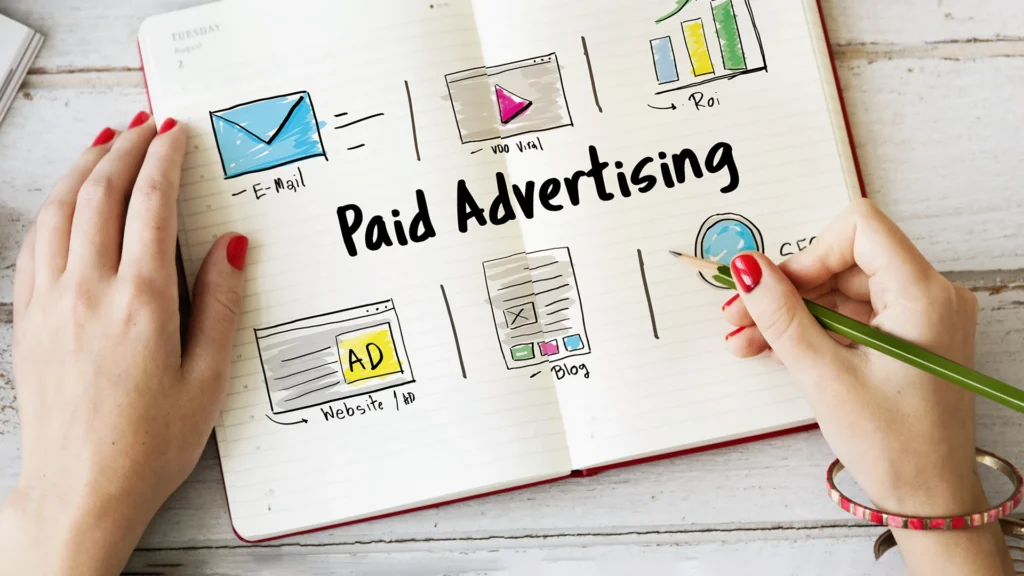Organic reach on social media is on life support.
According to Hootsuite, the average organic reach for a Facebook post is as low as 1-2%.
This means that if your brand has 10,000 followers, only 100 to 200 people are likely to see your content without paid promotion.
Similar trends are visible on platforms like Instagram and LinkedIn, where algorithmic changes prioritise paid content over organic posts.
The takeaway? Relying on organic content alone is no longer a viable strategy to connect with your audience and drive results.
To truly stand out, you need a well-planned paid social media strategy.
Paid social guarantees visibility, allows precise targeting, and delivers measurable results, making it a cornerstone of any effective digital marketing strategy.
In this guide, we’ll delve into the essentials of paid social media advertising, from why it’s indispensable in today’s landscape to actionable strategies for running successful campaigns.
Whether you’re creating your first ad or looking to optimise existing efforts, this guide will give you the insights you need to achieve impactful results.
Key Takeaways
- Paid social is essential: Paid social media ensures your brand is visible to a targeted audience, allowing you to overcome algorithm limitations and drive measurable business results.
- Wide range of ad formats: From Sponsored Posts to Stories Ads, paid social offers a wide range of options to suit different business goals, including brand awareness, lead generation, and conversions.
- Platform-specific strengths: Facebook, Instagram, LinkedIn, and TikTok cater to unique audience needs, providing tools to precisely target users and amplify your message.
- Strategic benefits: Paid social advertising enables precision targeting, enhances brand visibility, delivers faster results, and offers scalability for any budget.
- Actionable strategies: Developing a paid social strategy involves setting clear goals, understanding your audience, choosing the right platforms, creating high-quality content, and consistently monitoring performance.
[lwptoc min=”8″ depth=”1″ hierarchical=”1″ numeration=”decimalnested” numerationSuffix=”dot” title=”Table of Contents” toggle=”0″ backgroundColor=”#ffffff” borderColor=”#ffffff” linkColor=”#997317″]
What is Paid Social Advertising?
Paid social media advertising involves promoting content through social platforms to targeted audiences for a fee. Unlike organic posts that rely on algorithmic reach, paid ads ensure visibility to a defined audience.
For example, a SaaS company might use LinkedIn ads to target decision-makers in the IT sector, while an e-commerce brand might leverage Instagram ads to promote new product launches to millennials.
Types of Paid Social Ads
Paid social ads can appear in different formats. Here are some of the most popular ones:
-
Sponsored Posts
These are boosted posts that appear in users’ feeds, blending seamlessly with organic content. Ideal for increasing reach and engagement.
-
Carousel Ads
A multi-image or video ad format enabling storytelling or showcasing multiple products. Great for e-commerce brands highlighting a product range.
-
Video Ads
High-impact ads designed to capture attention quickly. These are versatile and can be used for awareness, engagement, or conversions.
-
Lead Generation Ads
Ads optimised for collecting user information (e.g., email addresses) directly within the platform.
-
Dynamic Ads
Personalised ads that display products or services based on user interactions, such as website visits or cart abandonment.
-
Stories Ads
Full-screen, immersive ads appearing in Stories, offering high engagement rates on mobile.
Key Platforms for Paid Social Media Marketing
1. Facebook
With over 3 billion active users, Facebook continues to be the largest social media platform, offering robust targeting tools, such as Lookalike Audiences and Custom Audiences, making it a favourite among advertisers.
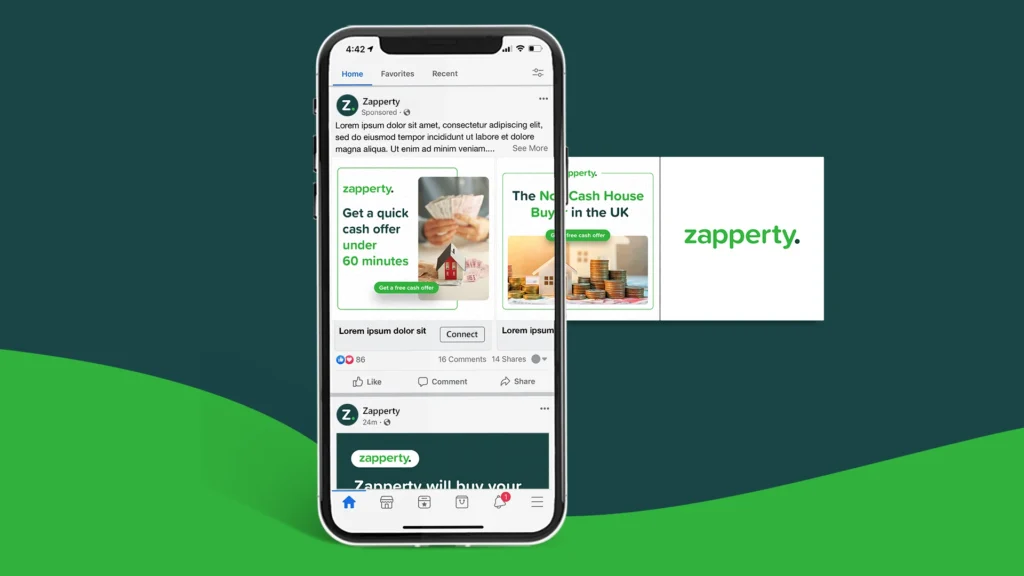
- Ad Formats: Photo ads, video ads, carousel ads, lead ads, and Messenger ads.
- Use Case: A small business might use Facebook Lead Ads to collect email addresses for its newsletter.
- Pro Tip: Use Facebook Pixel to track user behaviour on your site and retarget them with relevant ads.
2. Instagram
Instagram thrives on visual storytelling, making it ideal for brands with eye-catching visuals.
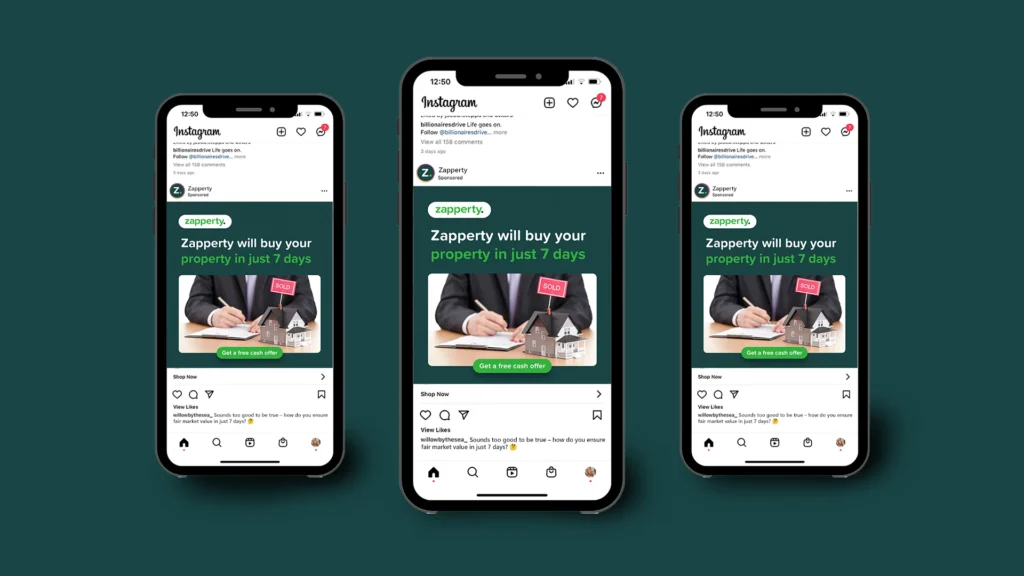
- Ad Formats: Stories Ads, Reels Ads, photo ads, and carousel ads.
- Use Case: A skincare brand might use Reels Ads to showcase a product application tutorial.
- Pro Tip: Include user-generated content in your ads to build trust and authenticity.
3. LinkedIn
LinkedIn excels in B2B advertising, with powerful targeting features for professional audiences.
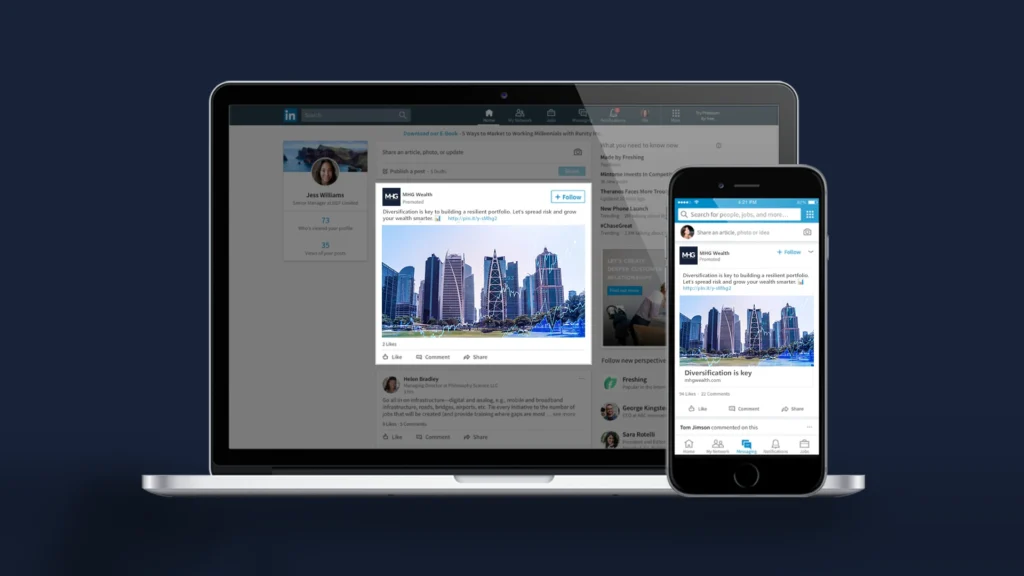
- Ad Formats: Sponsored content, text ads, dynamic ads, and InMail ads.
- Use Case: A SaaS company might run InMail campaigns targeting IT managers with free trial offers.
- Pro Tip: Use LinkedIn’s Audience Insights to refine your targeting based on job function and industry.
4. TikTok
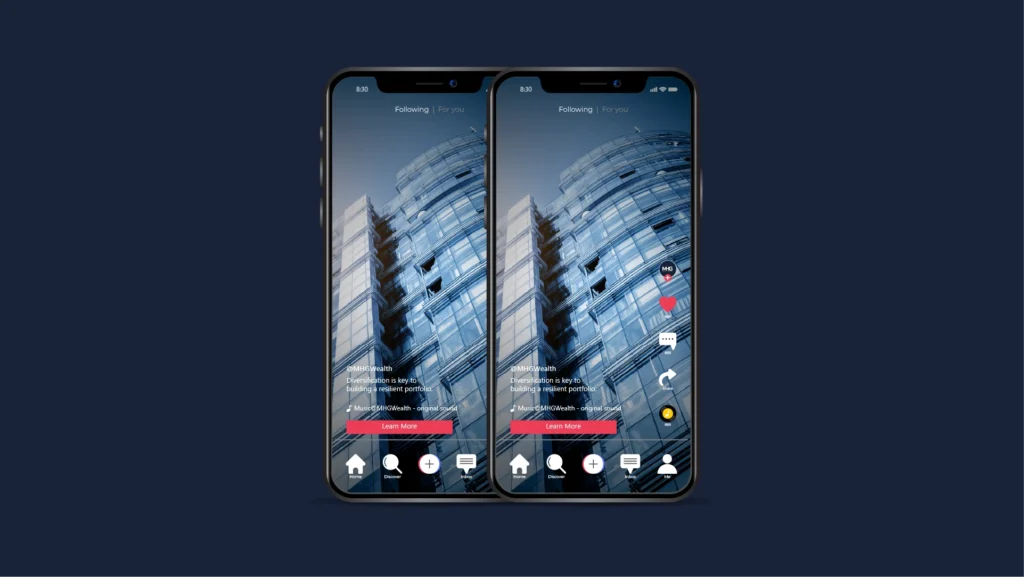
TikTok’s user base loves creative and entertaining content, making it ideal for brands targeting younger audiences.
- Ad Formats: In-Feed Ads, Branded Hashtag Challenges, and Spark Ads.
- Use Case: A beverage brand could launch a Branded Hashtag Challenge to encourage user participation.
- Pro Tip: Keep ads authentic and aligned with TikTok trends for maximum engagement.
5. Other Platforms (X, Pinterest, Snapchat)
- X (Formally Twitter): Best for real-time campaigns tied to events.
- Pinterest: Effective for lifestyle brands targeting users planning projects or making purchases.
- Snapchat: Ideal for brands targeting Gen Z with playful, interactive content like AR Lens ads.
Benefits of Paid Social Ads
Paid social media advertising offers a wide range of benefits that can help you achieve your marketing goals efficiently. From precise targeting to measurable outcomes, here’s why it’s a must-have in your strategy:
1. Precision Targeting
One of the most powerful advantages of paid social media advertising is its ability to deliver highly targeted campaigns. Unlike traditional forms of advertising that rely on broad demographic data, social media platforms provide sophisticated tools to pinpoint the exact audience you want to reach.
How It Works
Social media platforms like Facebook, Instagram, LinkedIn, and TikTok gather extensive data from user profiles, online behavior, and interactions. As an advertiser, you can leverage this data to create custom audiences based on:
- Demographics: Age, gender, education, marital status, and more.
- Interests: Hobbies, likes, and preferences.
- Behaviour: Purchasing habits, device usage, or travel history.
- Intent: Actions like visiting your website, engaging with similar brands, or searching for related products. For instance, a platform like Facebook uses intent signals to identify users actively considering purchases.
Advanced Targeting Options
- Lookalike Audiences: Platforms like Facebook allow you to target users who share similar traits with your existing customers, expanding your reach without losing relevance.
- Custom Audiences: Upload your customer database to target specific users directly or re-engage with those who’ve interacted with your business.
- Geotargeting: Narrow your audience to specific locations, down to a city or even a one-mile radius. Perfect for local businesses looking to attract nearby customers.
2. Increased Brand Visibility
Paid social media is one of the most effective ways to get your brand in front of the right audience, even if they’ve never heard of you before. Unlike organic posts that are limited by algorithms and existing follower bases, paid advertising ensures your message reaches a broader audience, significantly boosting your brand’s visibility.
How It Works
Paid social ads appear prominently on users’ feeds, Stories, or search results, often blending seamlessly with organic content. This ensures your brand is seen even by users who don’t follow you or interact with your industry regularly.
- Wider Reach: Platforms like Facebook and Instagram allow you to target millions of users globally, while LinkedIn and Twitter (X) excel in niche, professional audiences.
- Multiple Ad Placements: Use a mix of Stories, feed ads, and in-platform tools like Instagram Reels to maximise exposure.
- Consistent Presence: Regular paid campaigns help keep your brand top of mind, fostering familiarity and trust over time.
3. Faster Results
Paid social media provides instant exposure, delivering results far quicker than organic efforts. Organic strategies often take weeks or months to build momentum, while paid campaigns can drive traffic, leads, or sales within hours of launching.
How It Works
When you launch a paid campaign, platforms prioritise your content, placing it in front of your target audience immediately. This is especially beneficial for time-sensitive promotions, such as:
- Product launches or limited-time offers.
- Event registrations or seasonal sales.
4. Measurable ROI
Paid social media advertising provides detailed insights, allowing you to track every aspect of your campaign and calculate ROI with precision. Unlike traditional advertising methods, you know exactly how your budget is being spent and the returns you’re getting.
How It Works
Platforms like Facebook Ads Manager and Google Ads provide comprehensive analytics, including:
- Impressions and Reach: See how many users your ad reached.
- Engagement: Track likes, shares, and comments.
- Conversion Metrics: Monitor actions like clicks, sign-ups, or purchases.
5. Scalability for All Budgets
One of the most compelling benefits of paid social is its scalability. Whether you’re a small business with a limited budget or a global enterprise with millions to spend, paid social adapts to your needs.
How It Works
Paid social platforms allow you to set daily or campaign-wide budgets, giving you control over how much you spend. You can start with a small investment, assess performance, and scale up as you see results.
- Low-Budget Campaigns: Test the waters with a budget as low as $10/day.
- High-Impact Campaigns: Scale to larger budgets with advanced targeting and multiple ad formats.
How to Develop a Paid Social Strategy
Creating a successful paid social strategy requires a structured approach, where every step is geared toward meeting specific goals while optimising performance. Here’s how to develop a strategy that works:
1. Define Clear Campaign Goals
Start by identifying the purpose of your campaign. What do you want to achieve? Your goals will determine everything from the platform you use to the type of ad you create.
- Brand Awareness: If your goal is to introduce your brand to new audiences, focus on metrics like impressions and reach. Use eye-catching visuals and clear messaging.
- Lead Generation: Looking to grow your customer base? Use lead ads on platforms like Facebook or LinkedIn to collect contact information directly.
- Direct Sales: For e-commerce or retail businesses, conversion-focused ads with strong CTAs work best.
2. Understand Your Audience
A successful campaign is built on knowing your audience inside and out. Research their demographics, preferences, and online behaviour using tools like:
- Facebook Audience Insights: Analyse interests, behaviours, and purchase activity.
- Google Analytics: Track which platforms your website visitors come from.
- TikTok Business Center: Understand trends and preferences of younger audiences.
Segment your audience into groups based on shared traits to create hyper-targeted campaigns. For instance, if you’re a fitness brand, you might create separate ads for gym-goers, runners, and yoga enthusiasts.
3. Choose the Right Platforms
Not all platforms are created equal, and the one you choose should align with your goals and audience.
- Facebook & Instagram: Great for B2C businesses and visually driven campaigns.
- LinkedIn: Ideal for B2B and targeting professionals.
- TikTok: Best for engaging Gen Z and Millennials with creative, authentic content.
- Pinterest: Perfect for brands in lifestyle, home décor, or fashion.
Focus on the platforms where your audience is most active, and don’t be afraid to test multiple platforms to see what works best.
4. Set Budgets Wisely
Budgeting is critical to your campaign’s success, but you don’t have to spend big to start. Follow these steps:
- Start Small: Allocate a modest budget to test your campaign’s performance. For example, run a $10/day campaign for one week to gather data.
- Adjust Based on Results: Scale up the budget for high-performing ads and tweak or pause underperforming ones.
- Choose the Right Bidding Strategy: Decide whether you want to optimise for clicks, impressions, or conversions based on your goals.
Pro Tip: Most platforms provide recommendations for budget ranges during the ad setup process.
5. Create High-Quality Content
Your ad content is the first impression users will have of your brand, so make it count.
- Professional Visuals: Use high-quality images or videos that reflect your brand identity. Avoid overly stocky visuals.
- Concise, Compelling Copy: Write headlines and descriptions that capture attention and drive action. Test different CTAs like “Shop Now,” “Learn More,” or “Sign Up Today.”
- Mobile-First Design: Ensure your ads are optimised for mobile since most users access social media on their phones.
6. Monitor and Adjust
A paid social strategy isn’t static—it’s dynamic and requires continuous monitoring.
- Track Key Metrics: Use platform analytics to measure performance. Key metrics include CTR (Click-Through Rate), CPA (Cost Per Acquisition), and ROAS (Return on Ad Spend).
- A/B Testing: Test different ad variations to determine what resonates with your audience. (More on this in a bit)
- Optimise Regularly: Pause ads that underperform and reallocate the budget to high-performing ones. Experiment with new formats or audiences to find untapped opportunities.
Best Practices for Paid Social Media Advertising
To maximise the effectiveness of your paid social media campaigns, it’s essential to follow proven best practices. The following strategies ensure your ads resonate with your audience, achieve measurable results, and provide a strong return on investment.
1. Use A/B Testing
A/B testing, also known as split testing, is a critical practice for optimising your ad campaigns. It involves creating two or more variations of an ad and testing them against each other to see which performs best.
- What to Test: Experiment with headlines, visuals, CTAs, and even targeting options. For example, test one headline emphasising urgency (“Hurry—Ends Today!”) against another highlighting value (“Save 50% on Your First Order!”).
- Benefits: A/B testing helps you identify what resonates most with your audience, ensuring your budget is spent effectively.
2. Leverage Platform-Specific Features
Each social media platform offers unique tools and ad formats that can amplify your campaign’s success. Tailoring your ads to take advantage of these features is key to standing out.
- Instagram: Use Reels Ads to showcase short, engaging video content.
- LinkedIn: Run Sponsored InMail campaigns for direct, personalised outreach.
- Facebook: Use Lead Ads to collect user information without directing them off-platform.
3. Design for Mobile
With most social media activity occurring on mobile devices, designing ads specifically for mobile is non-negotiable.
- Vertical Formats: Use full-screen vertical videos and images for Stories and Reels to maximise screen real estate.
- Short Content: Stick to concise, impactful messaging that grabs attention within seconds.
- Clickable CTAs: Ensure buttons and links are easy to tap.
4. Maintain Consistent Branding
A cohesive brand identity builds trust and ensures your audience recognises your content across all platforms.
- Visual Elements: Use the same logo, colours, and fonts across all ad creatives.
- Tone and Voice: Maintain a consistent tone, whether playful, professional, or empathetic, that aligns with your brand.
- Cross-Platform Consistency: Ensure your branding is uniform, even if the ad formats differ.
5. Retarget to Recapture Leads
Retargeting is a powerful practice to re-engage users who have already interacted with your brand but didn’t convert.
- How It Works: Use pixel tracking or platform tools to identify and retarget users who visited your website, abandoned a shopping cart, or engaged with previous ads.
- Why It’s Effective: Retargeting serves as a gentle reminder, encouraging users to complete their journey.
Conclusion
With organic reach shrinking across all social platforms, you need to leverage paid social to stay competitive, connect with your audience, and drive measurable results. Whether it’s precision targeting, enhanced brand visibility, or rapid scalability, the benefits of paid social are clear. But creating impactful campaigns requires a strategic approach, attention to detail, and constant refinement.
At Dominate Online, we specialise in crafting results-driven paid social strategies that do more than just get you seen, they deliver real ROI. Built by business owners for business owners, we understand that every penny counts, and our mission is to help you take control of your digital presence and outperform your competition.
Ready to dominate your market? Let’s build a paid social strategy that drives results and transforms your business. Explore our paid social service or reach out to our team today.
Paid Social Media FAQs
What is the difference between organic and paid social media?
Organic social relies on unpaid efforts to engage followers, while paid social involves advertising to extend reach and target specific users.
How much should I budget for a paid social campaign?
Budgeting depends on your goals, platform, and audience. Start small, analyse results, and scale as needed.
What are the best platforms for B2B paid social media?
LinkedIn is highly effective for B2B campaigns due to its professional audience and targeting options.
How do I track the success of my paid social ads?
Use metrics like click-through rates, conversions, and ROI through platform analytics.
Can paid social work for small businesses?
Yes, paid social is scalable and can help small businesses reach their target audience efficiently.
Are ads on Amazon considered paid social?
No, ads on Amazon are not considered paid social. They fall under the category of paid search or e-commerce advertising.
